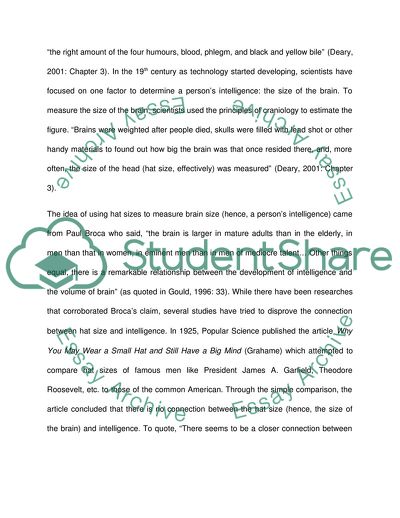Cite this document
(The Connection between Hat Size and Intelligence Coursework Example | Topics and Well Written Essays - 1500 words - 1, n.d.)
The Connection between Hat Size and Intelligence Coursework Example | Topics and Well Written Essays - 1500 words - 1. https://studentshare.org/statistics/1769292-hat-size-and-intelligence
The Connection between Hat Size and Intelligence Coursework Example | Topics and Well Written Essays - 1500 words - 1. https://studentshare.org/statistics/1769292-hat-size-and-intelligence
(The Connection Between Hat Size and Intelligence Coursework Example | Topics and Well Written Essays - 1500 Words - 1)
The Connection Between Hat Size and Intelligence Coursework Example | Topics and Well Written Essays - 1500 Words - 1. https://studentshare.org/statistics/1769292-hat-size-and-intelligence.
The Connection Between Hat Size and Intelligence Coursework Example | Topics and Well Written Essays - 1500 Words - 1. https://studentshare.org/statistics/1769292-hat-size-and-intelligence.
“The Connection Between Hat Size and Intelligence Coursework Example | Topics and Well Written Essays - 1500 Words - 1”. https://studentshare.org/statistics/1769292-hat-size-and-intelligence.


